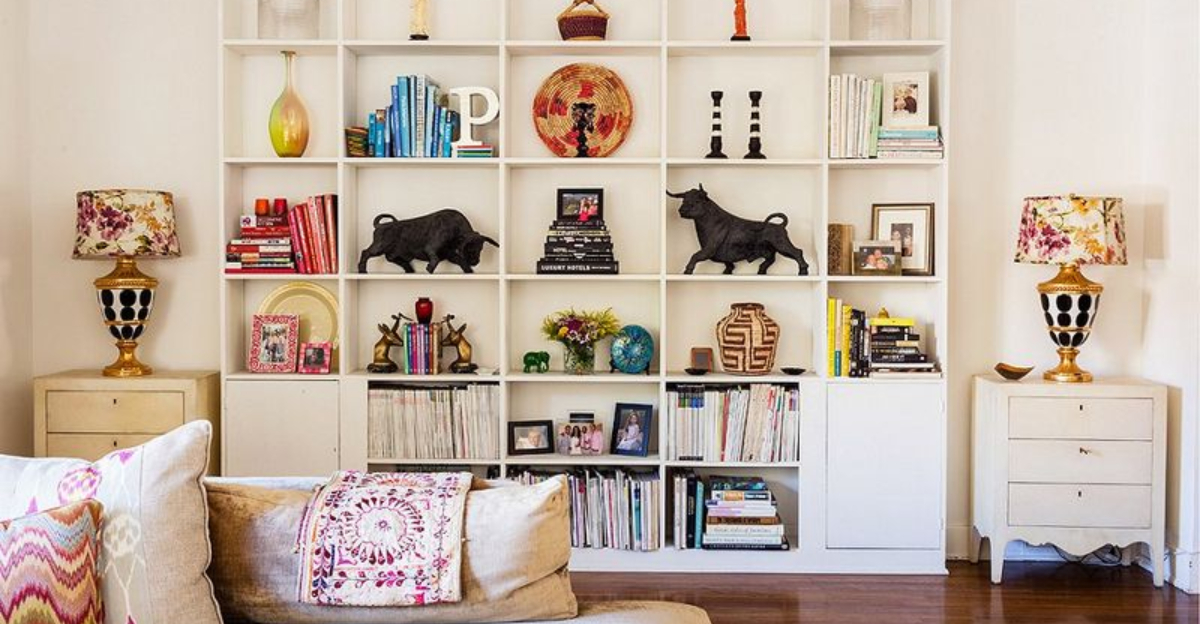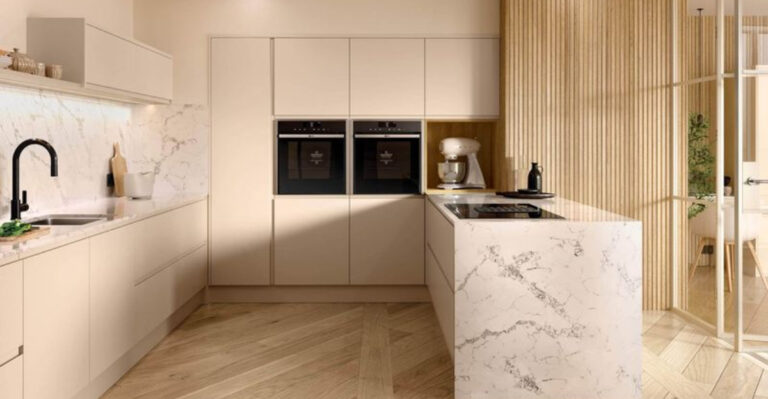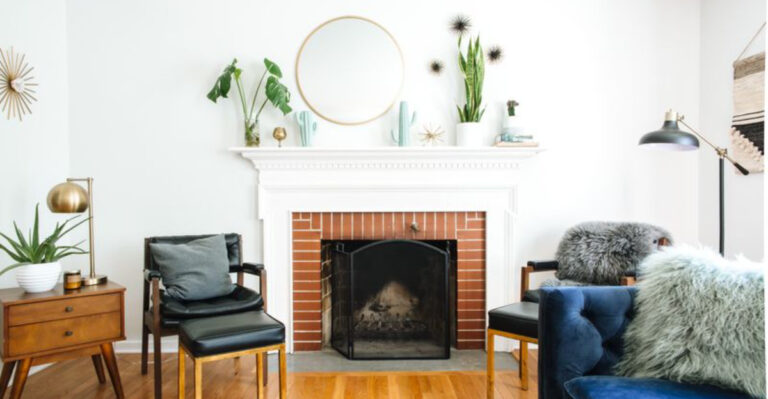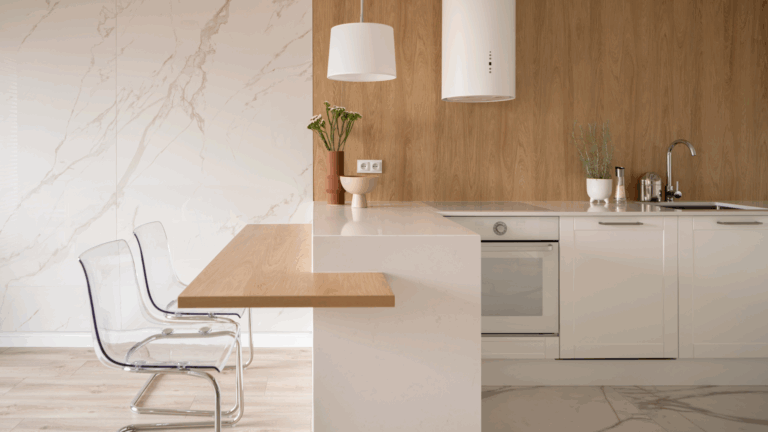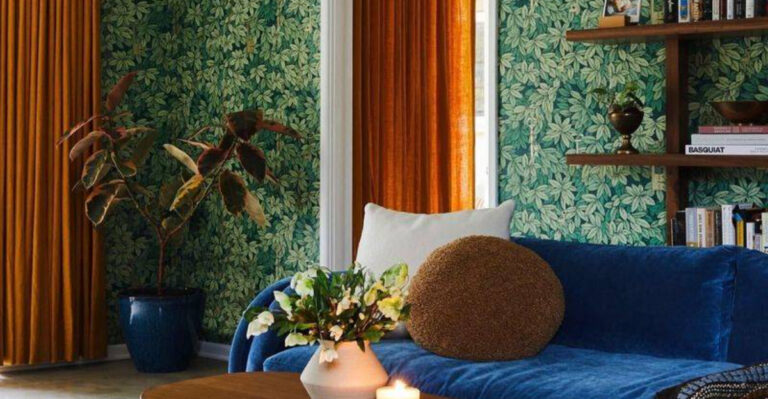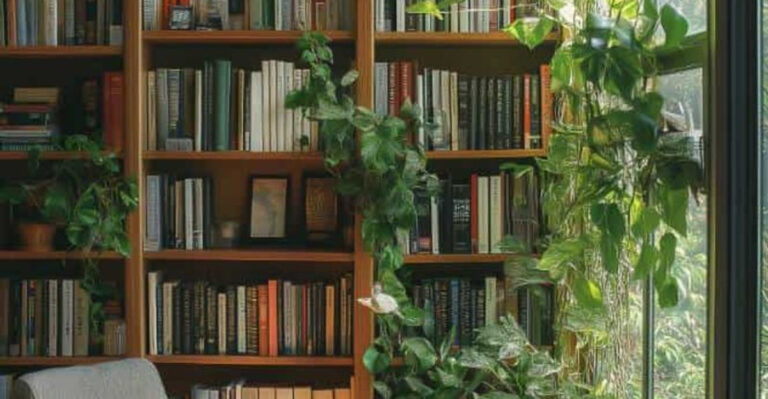18 Bookcase Styling Techniques That Go Beyond Just Placing Books
Bookcases aren’t just for books anymore! They’ve become prime real estate for showing off your personality and style. Whether you have a built-in library or a simple standalone shelf, there are countless ways to transform these spaces into eye-catching displays.
Check out these 18 techniques that will take your bookcase from boring to brilliant!
1. Layer with Decorative Objects
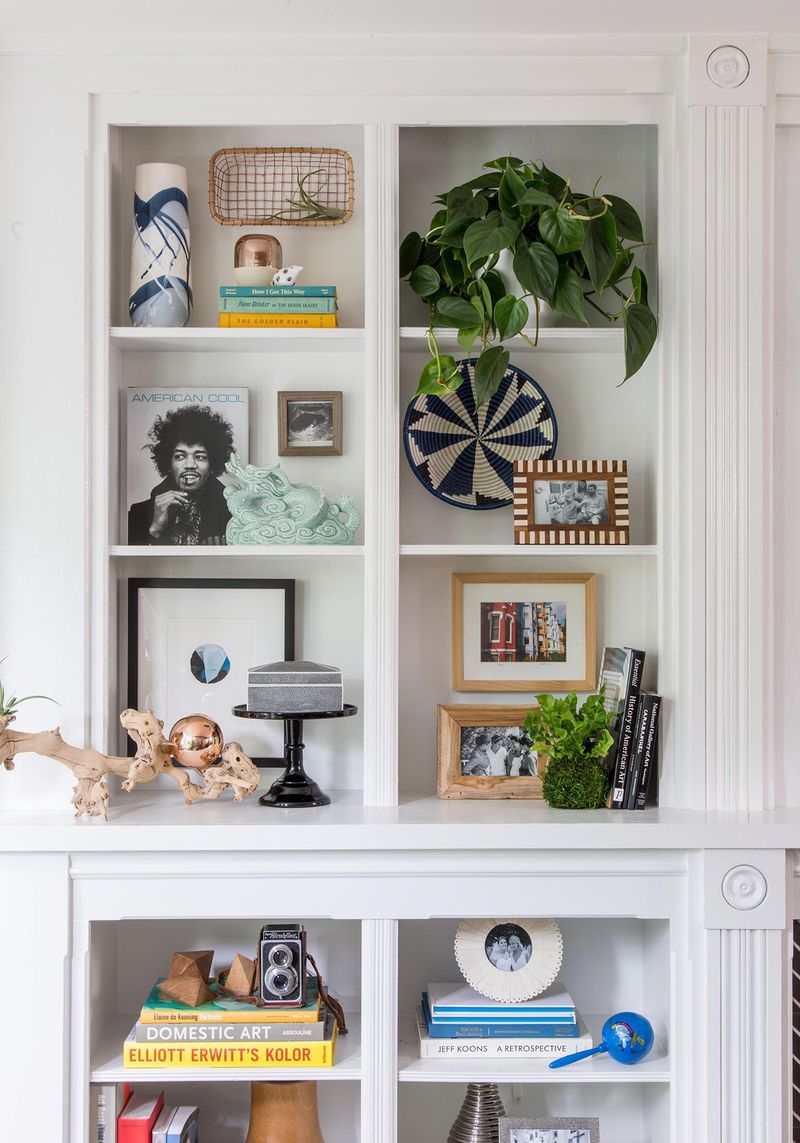
Start by placing pretty objects in front of your book rows to create depth. Small framed photos, tiny vases, or decorative boxes work wonderfully here.
The key is not overcrowding – select just a few special pieces that complement your book collection. Remember that negative space allows the eye to rest and appreciate each carefully chosen item.
2. Mix Horizontal and Vertical Stacks
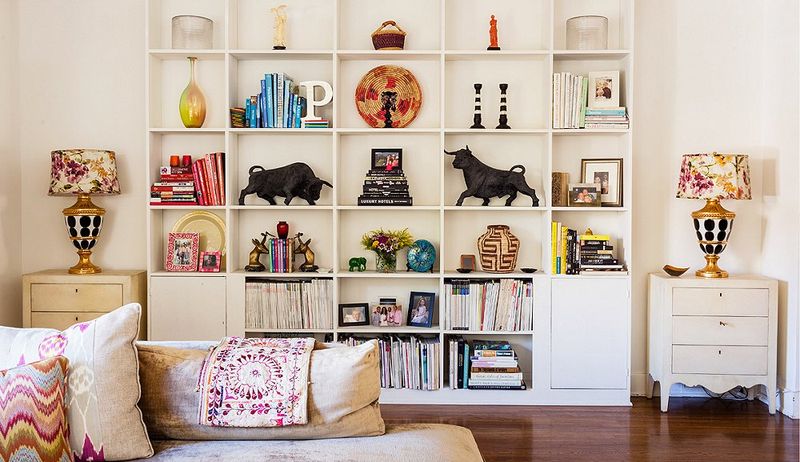
Breaking up the monotony of vertical book rows instantly adds visual interest. Stack some books horizontally and use them as pedestals for small decorative items.
Vertical arrangements provide traditional structure while horizontal stacks create breathing room. Playing with both orientations transforms an ordinary bookcase into a dynamic focal point that draws attention in all the right ways.
3. Incorporate Plants for Freshness
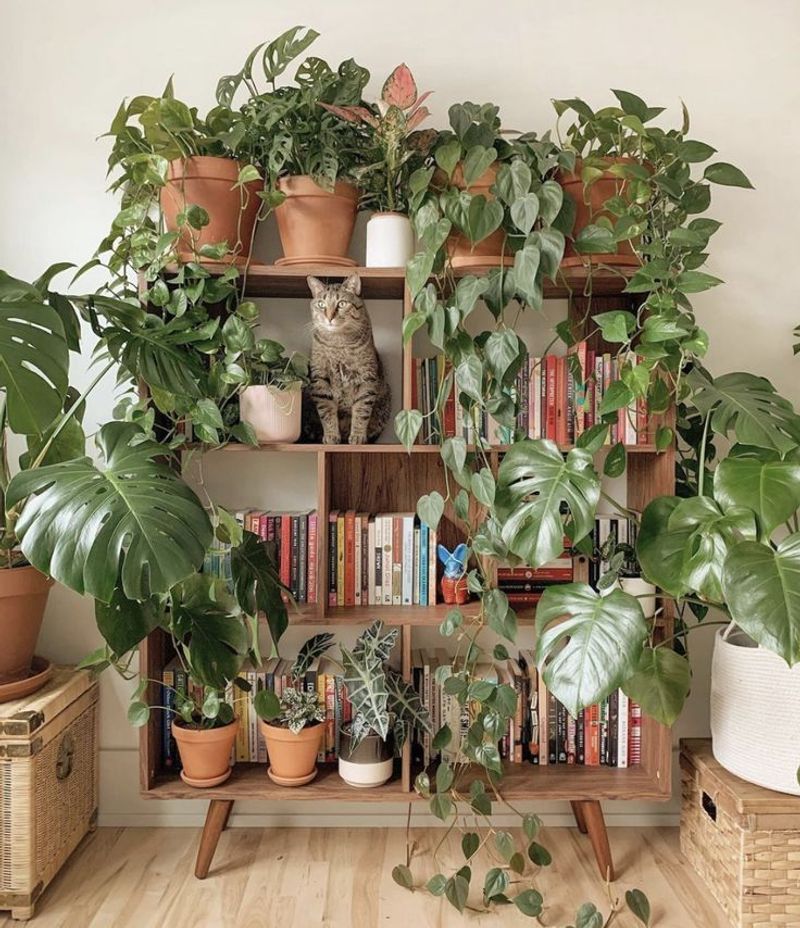
Nothing breathes life into shelving quite like greenery! Trailing pothos, compact succulents, or slender snake plants soften rigid bookcase lines with organic shapes.
Choose plants based on your shelf’s light conditions – low-light varieties work well for darker corners. Alternating heights and textures creates rhythm across the shelves while purifying your air at the same time.
4. Use Baskets for Hidden Storage
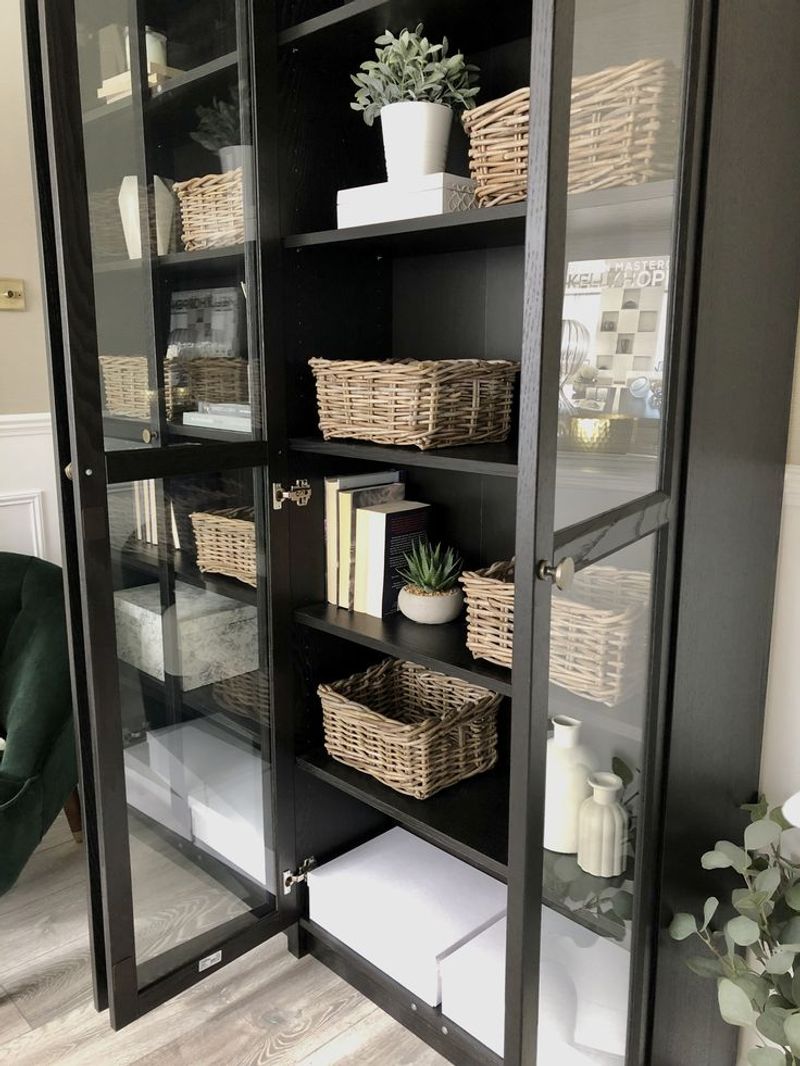
Got clutter? Woven baskets transform messy necessities into stylish shelf elements. Square, rectangular, or round options all work beautifully to corral small items.
Select baskets in complementary materials – seagrass, water hyacinth, or fabric bins offer different textures. Label them discreetly for functionality without sacrificing the aesthetic appeal of your carefully curated display.
5. Display Art and Photos
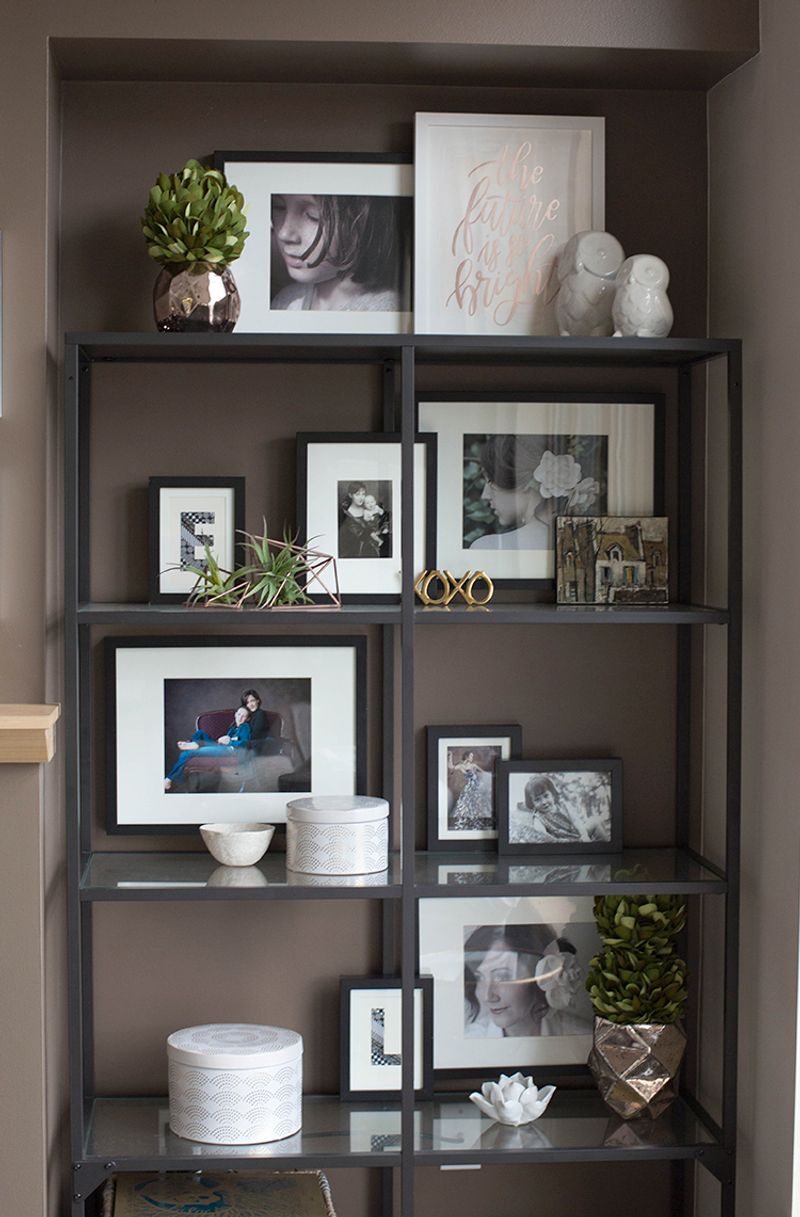
Family snapshots and artwork inject personality into bookcase arrangements. Leaning framed pieces creates casual elegance, while standing frames fit perfectly between book groupings.
Vary frame sizes and orientations for a gallery-like effect. Black and white photos provide cohesion in colorful shelves, while vibrant art pieces become striking focal points against neutral book spines.
6. Add Sculptural Pieces
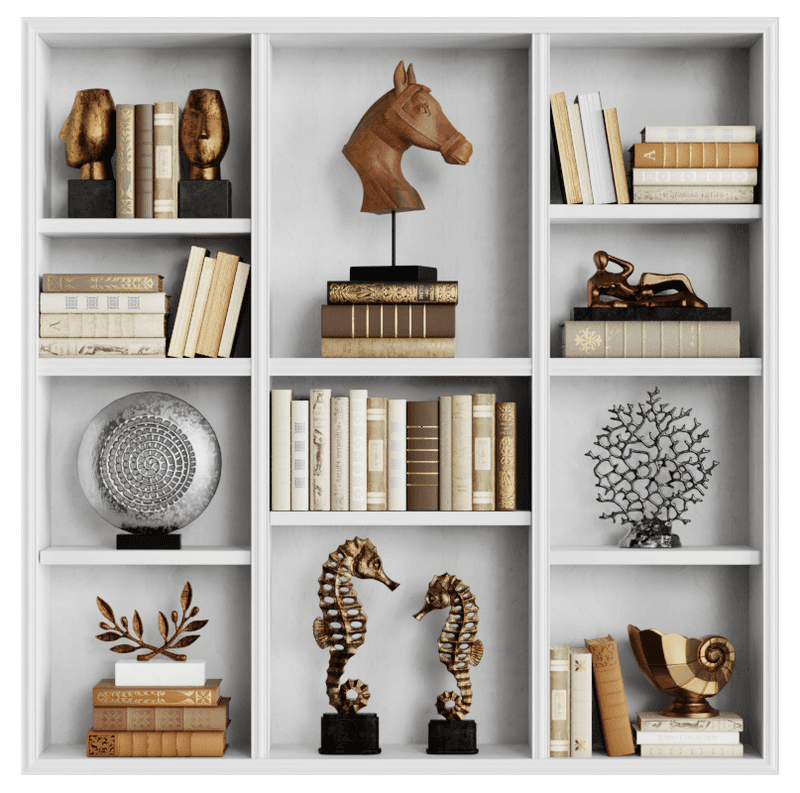
Unusual shapes command attention among rectangular books. Sculptural objects—whether ceramic animals, abstract forms, or natural specimens—create conversation-starting focal points.
Place your most striking piece at eye level for maximum impact. Varying heights and materials prevents visual monotony while expressing your unique taste. Even functional items like bookends become artistic statements when thoughtfully selected.
7. Play with Color Coordination
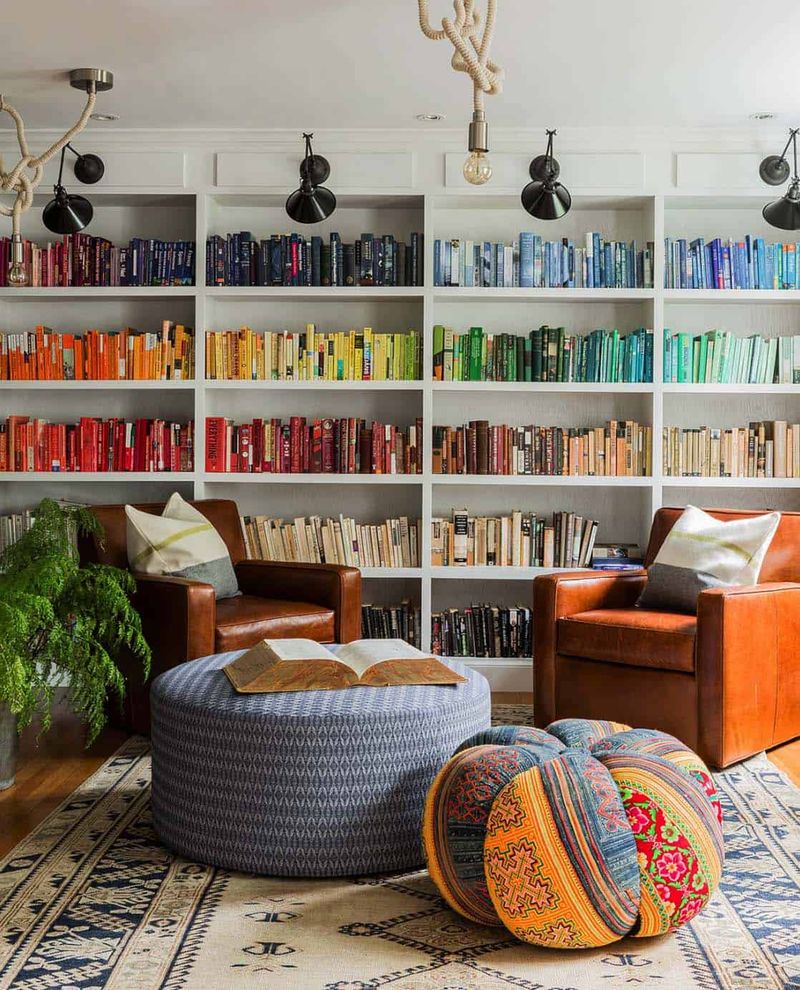
Rainbow arrangements instantly elevate ordinary shelves into Instagram-worthy displays. Group books by spine color for dramatic effect or stick to a limited palette that complements your room.
White space between color sections helps each hue pop visually. For a subtler approach, try organizing by color intensity—light to dark creates a beautiful ombré effect that’s both organized and artistic.
8. Include Vintage Finds
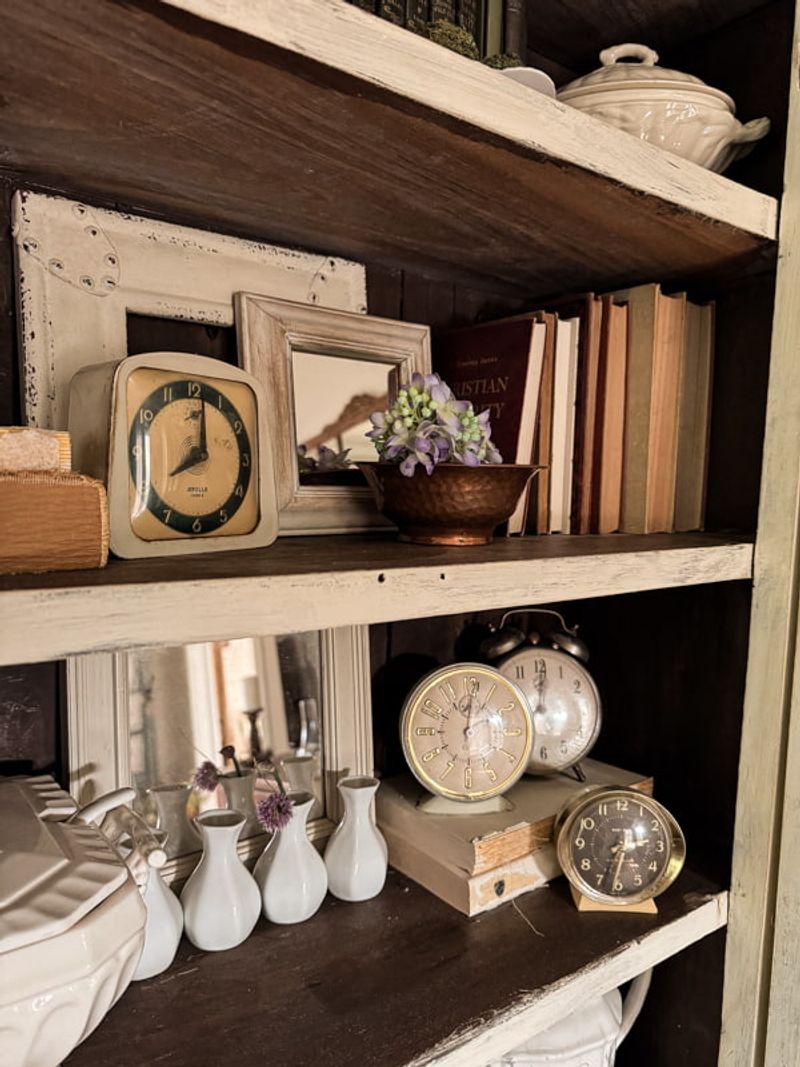
Flea market treasures add character no mass-produced decor can match. Vintage cameras, antique clocks, or weathered wooden objects bring warmth and history to sterile shelving.
Mix old with new to prevent the “museum effect.” Vintage items tell stories about your interests and travels while creating intriguing visual contrast. Even one special antique piece can transform an entire shelf arrangement.
9. Use Lighting to Highlight Items
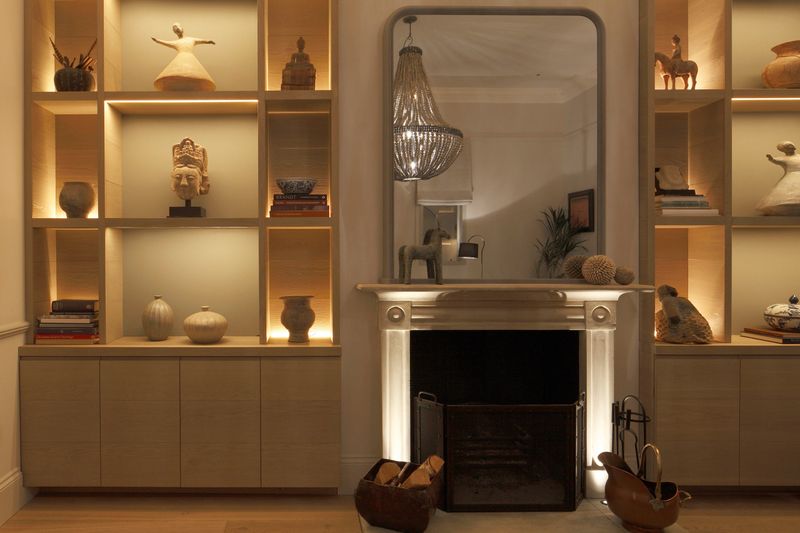
Spotlights transform ordinary shelves into dramatic displays. Small battery-operated puck lights illuminate special objects without requiring electrical work.
Strategic lighting draws the eye exactly where you want it to go. Picture lights mounted above shelves cast an elegant glow across book spines, while LED strip lighting creates a high-end built-in appearance that elevates the entire room.
10. Vary Shelf Heights
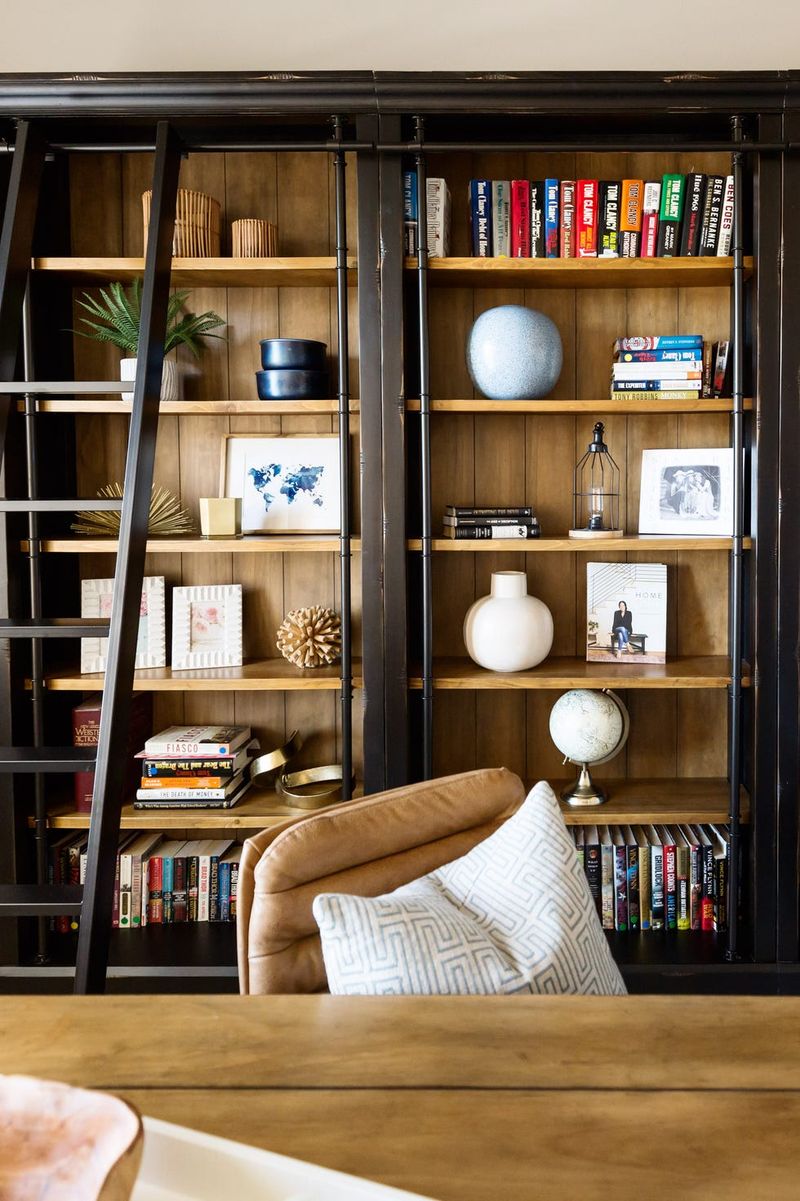
Adjustable shelving offers endless arrangement possibilities. Create taller spaces for statement pieces and art, with shorter sections for standard books.
Asymmetrical heights immediately modernize traditional bookcases. Removing shelves entirely in strategic spots makes room for larger decorative objects that would otherwise never fit, turning practical storage into an architectural statement that showcases your most impressive items.
11. Stack Books by Size
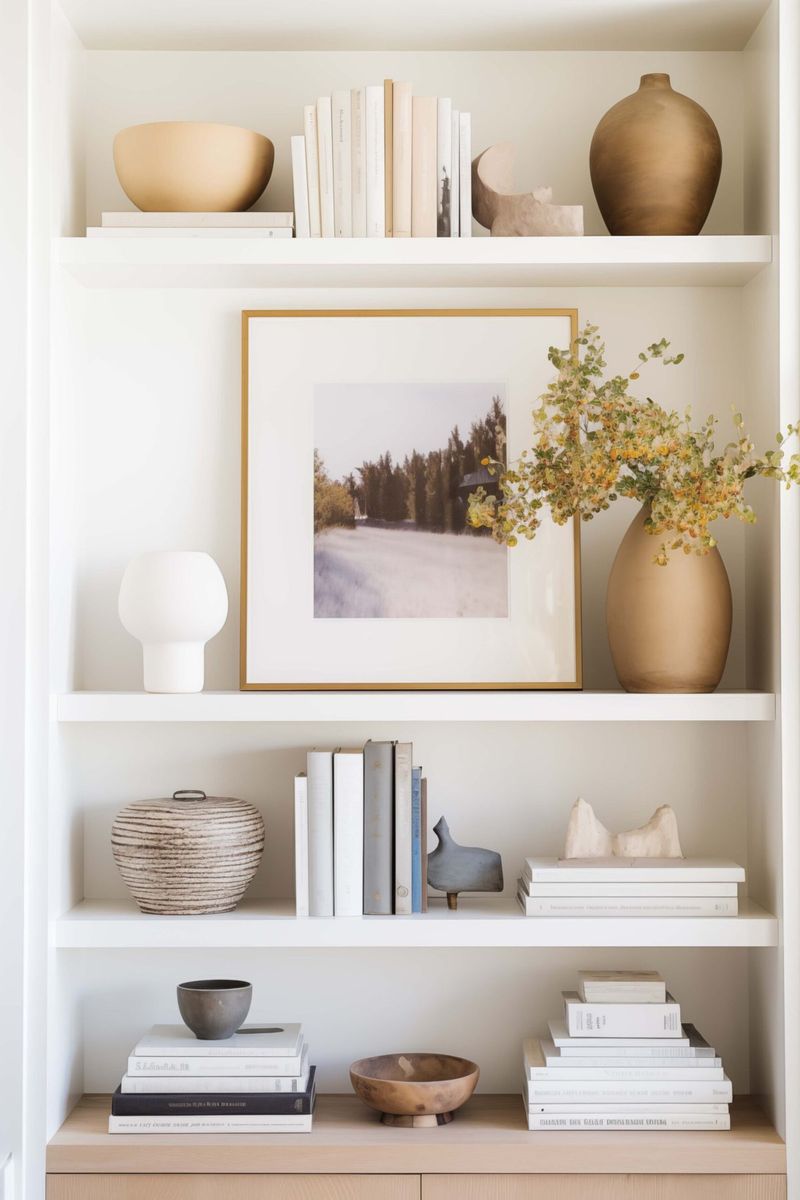
Organizing by height creates satisfying visual rhythm across shelves. Large art books make perfect platforms for displaying smaller decorative objects.
Group similar sizes together for a clean, intentional look. Alternating between vertical and horizontal arrangements based on book dimensions prevents the static feeling of traditional library shelving while maintaining an organized appearance that’s pleasing to the eye.
12. Incorporate Mirrors
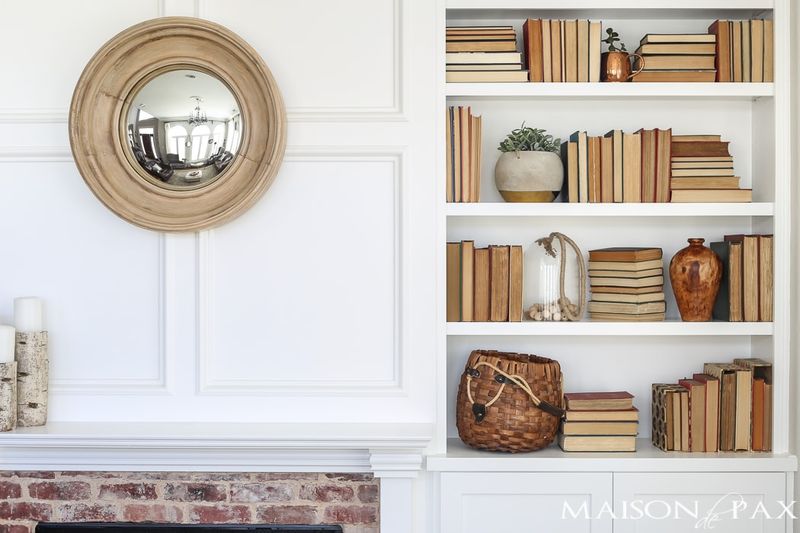
Reflective surfaces magically expand small spaces. Leaning a mirror against the back of a shelf creates depth while bouncing light throughout the room.
Small decorative mirrors interspersed between books add unexpected sparkle. For maximum impact, position mirrors to reflect something beautiful—like window light or an art piece—doubling the visual pleasure from every angle.
13. Use Trays to Group Items
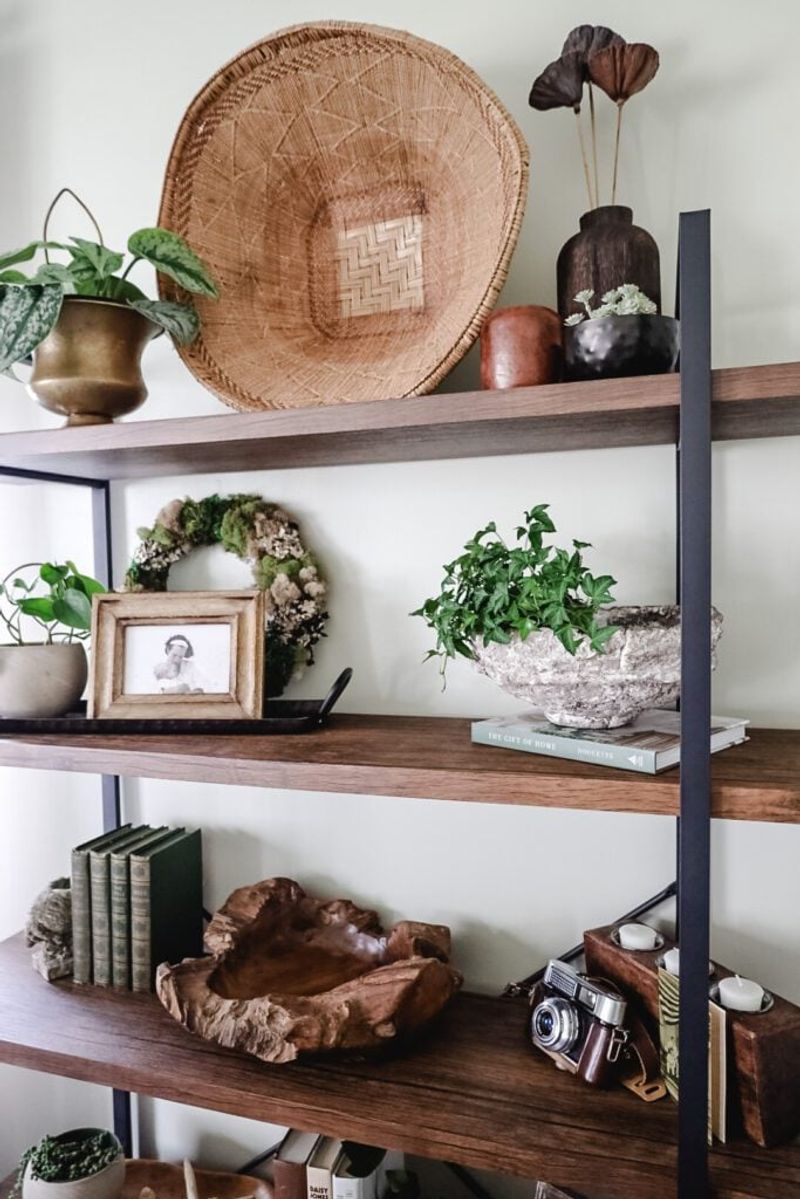
Corralling small objects on trays creates purposeful vignettes instead of random clutter. Metallic, wooden, or lacquered options add texture while defining distinct display areas.
A single tray can unite diverse items through proximity. Place complementary objects together—like a small plant, candle and figurine—to tell a cohesive visual story that brings sophistication to otherwise disconnected decorative elements.
14. Add Personal Memorabilia
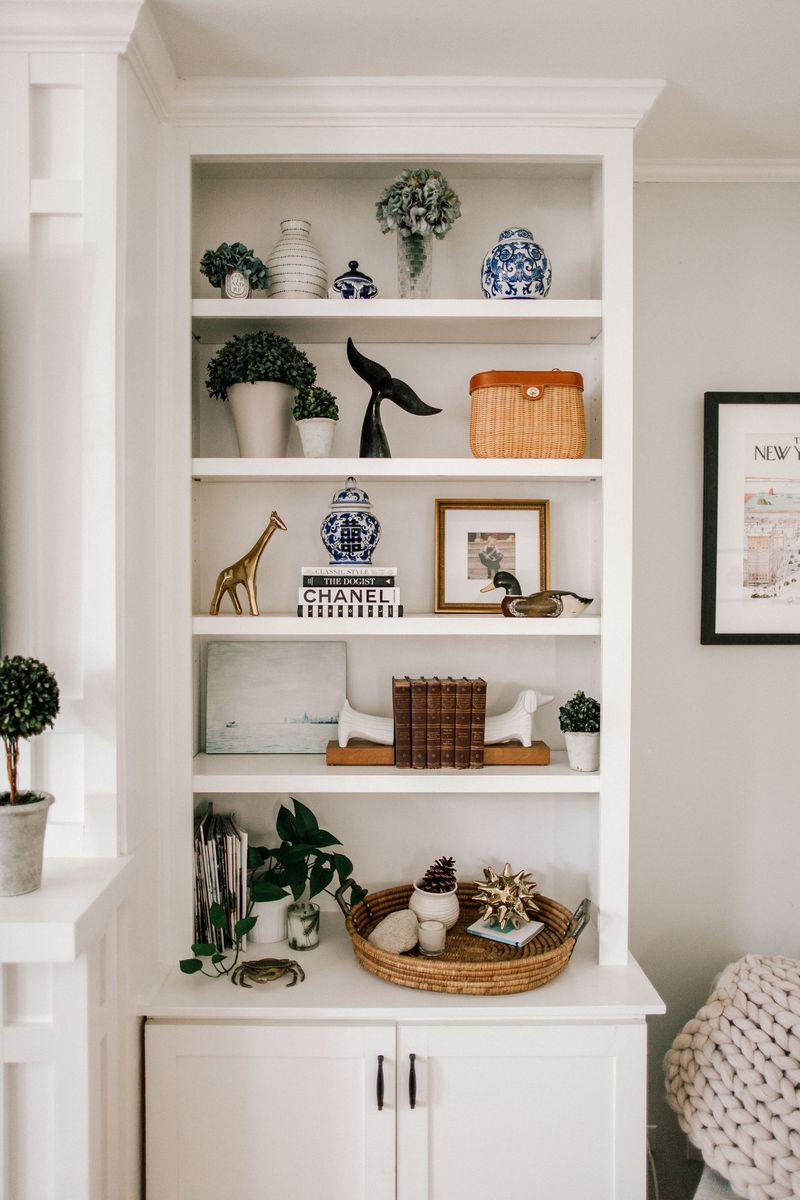
Souvenirs from travels or childhood keepsakes transform generic shelving into a deeply personal gallery. Shells collected from favorite beaches, ticket stubs from memorable concerts, or sports trophies tell your unique story.
Mix meaningful items among books to create delightful discoveries. Grouping related memorabilia creates visual themes that spark conversations and keep precious memories visible rather than hidden away.
15. Mix Textures and Materials
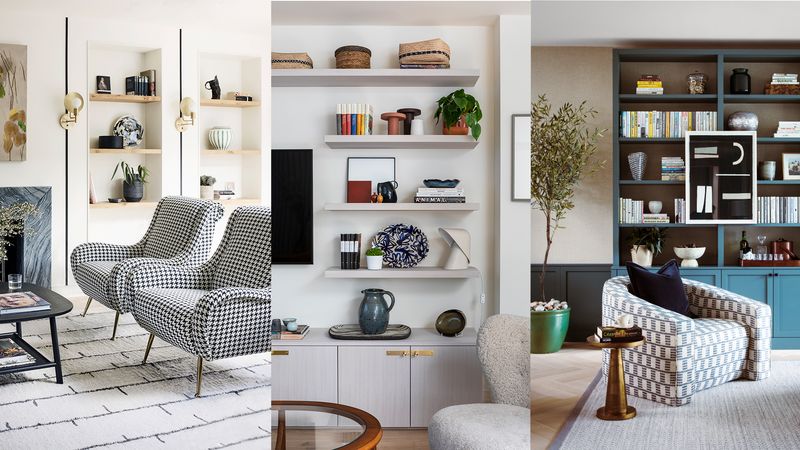
Combining rough ceramics with smooth glass creates tactile interest that invites touch. Woven baskets next to metallic objects and wooden frames create a multidimensional experience.
Material contrast prevents visual boredom across shelves. Incorporating diverse elements—from natural stone bookends to soft fabric-bound journals—creates a richly layered arrangement that feels collected over time rather than purchased all at once.
16. Create Symmetry or Asymmetry
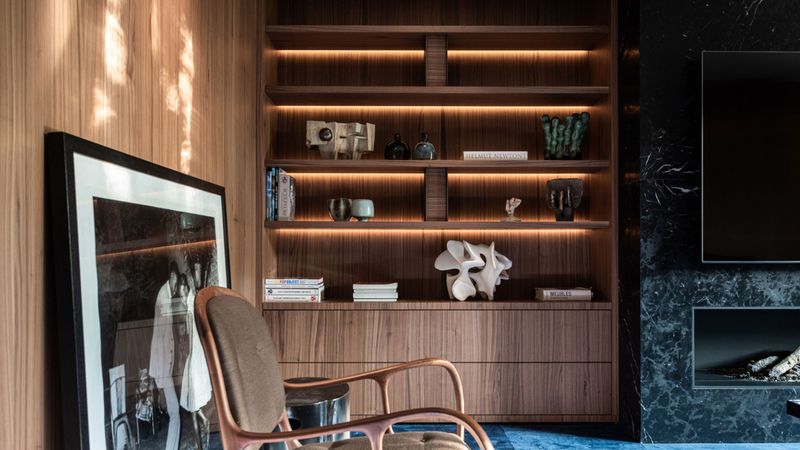
Matching arrangements on opposite shelves brings formal balance to traditional spaces. Identical objects flanking centerpieces create instant architectural impact.
For modern interiors, intentional asymmetry feels more dynamic and relaxed. Playing with visual weight rather than perfect mirroring creates energy while still maintaining overall balance. Either approach demonstrates thoughtful curation rather than random shelf stuffing.
17. Place Statement Pieces Strategically
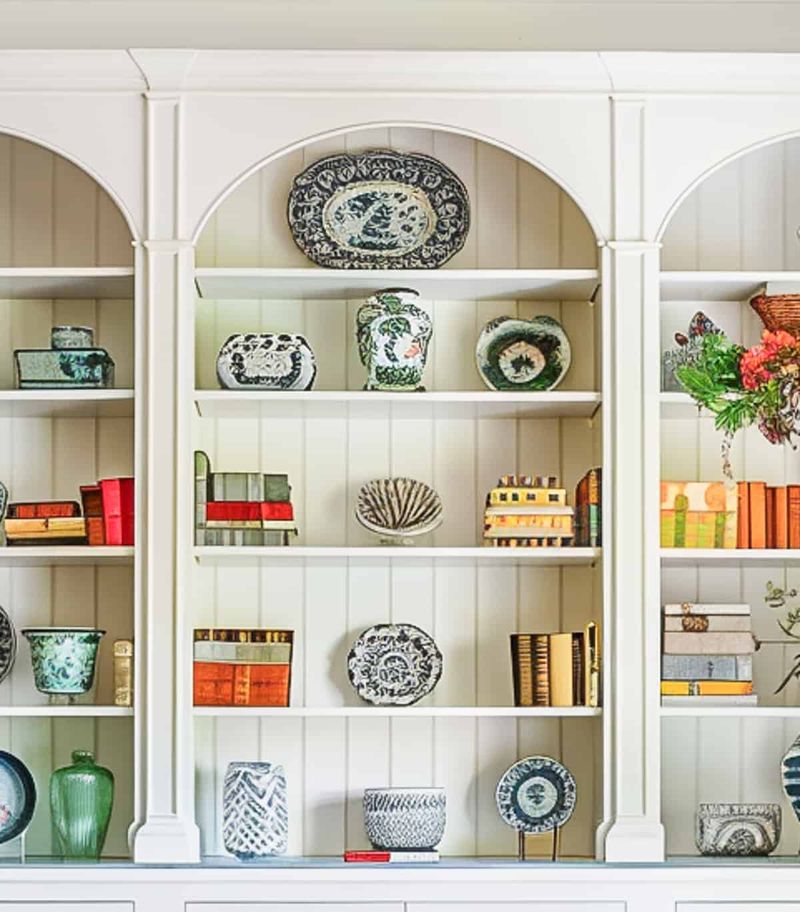
Eye-catching objects deserve prime real estate at eye level. Oversized art books, dramatic sculptures, or unusual collections become conversation starters when prominently positioned.
Leaving breathing room around standout pieces amplifies their impact. Creating a hierarchy of visual importance guides the viewer’s eye through your display, with statement pieces serving as anchors that give the entire arrangement purpose and personality.
18. Rotate Items Seasonally
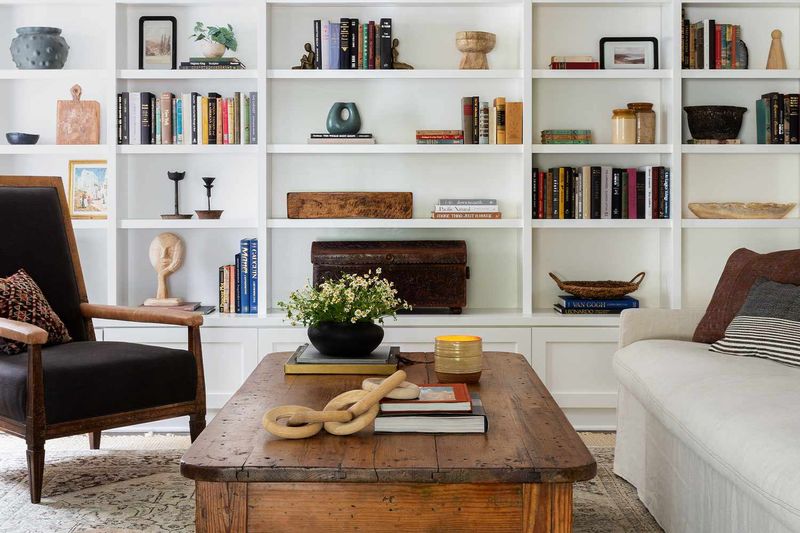
Swapping accessories with the seasons keeps shelving fresh and interesting. Summer might feature coastal elements while winter welcomes metallic accents and cozy textures.
Holiday-specific items can make temporary appearances without overwhelming. Maintaining the same basic structure while refreshing accent pieces offers the perfect balance between consistency and novelty, preventing display fatigue while honoring the changing rhythms of the year.

